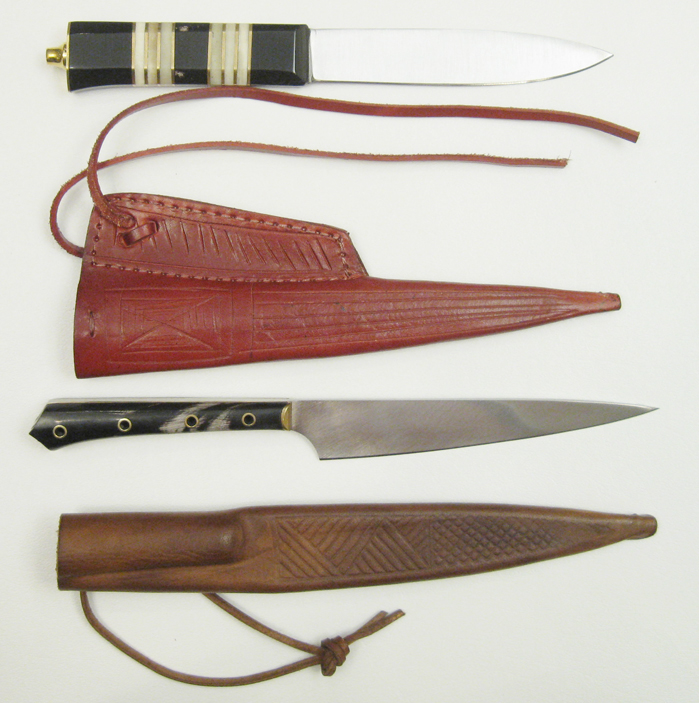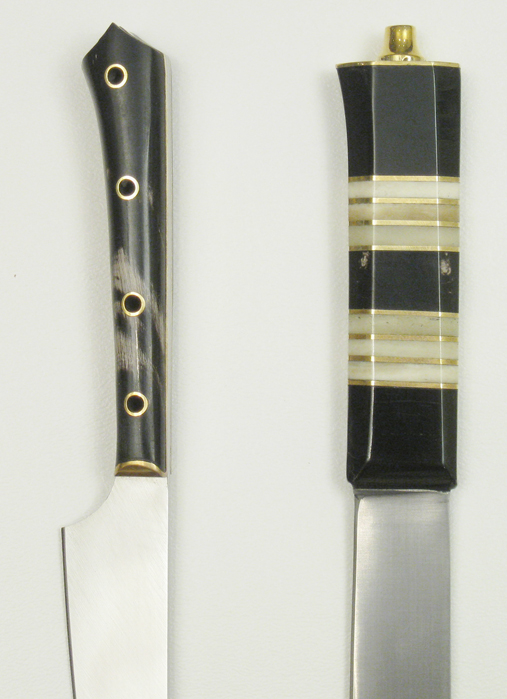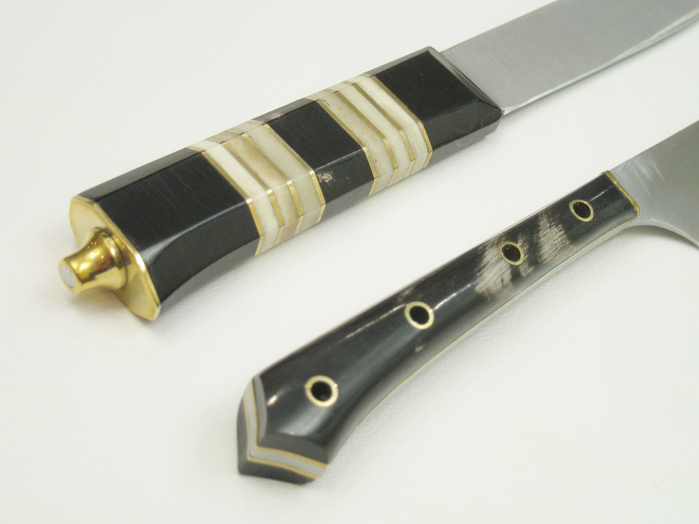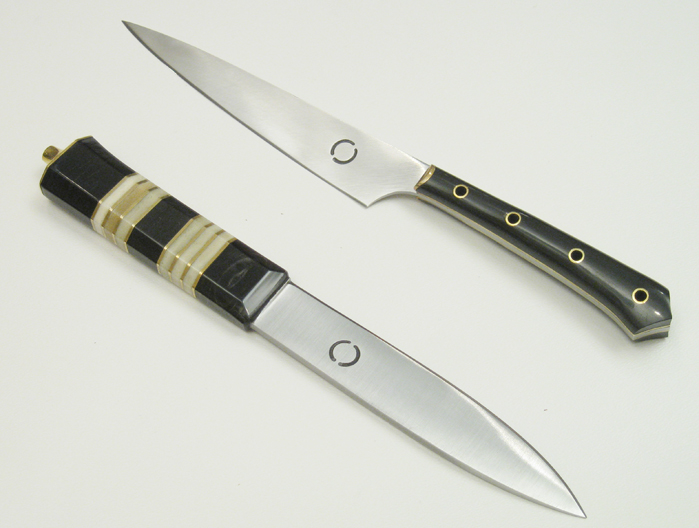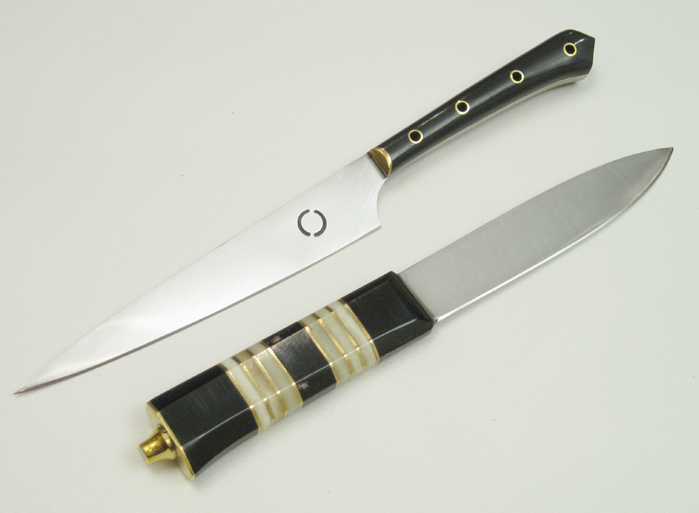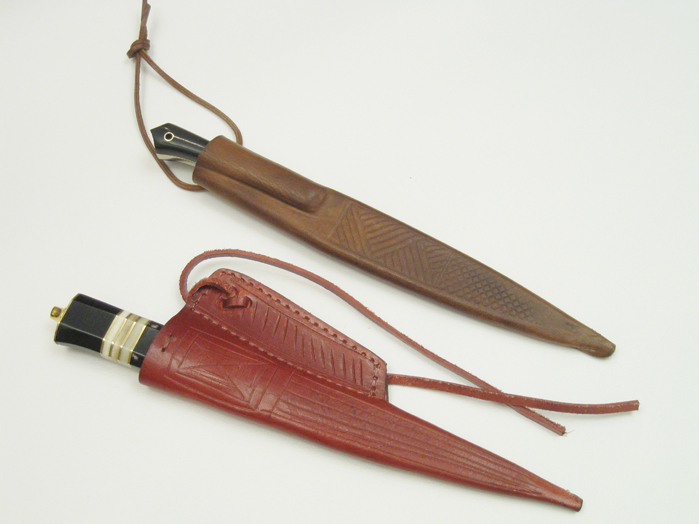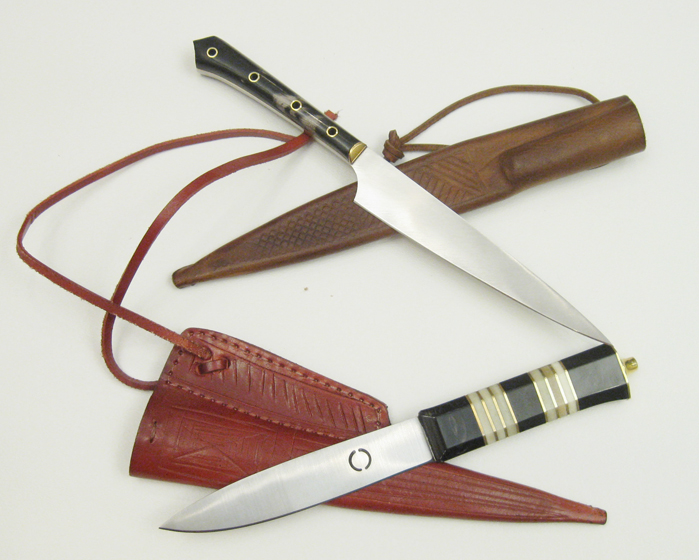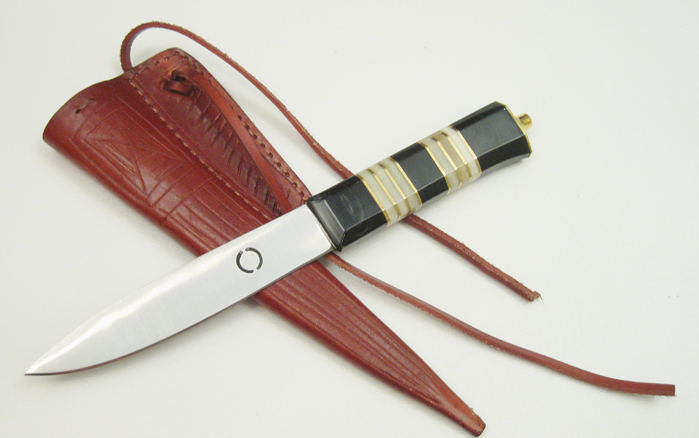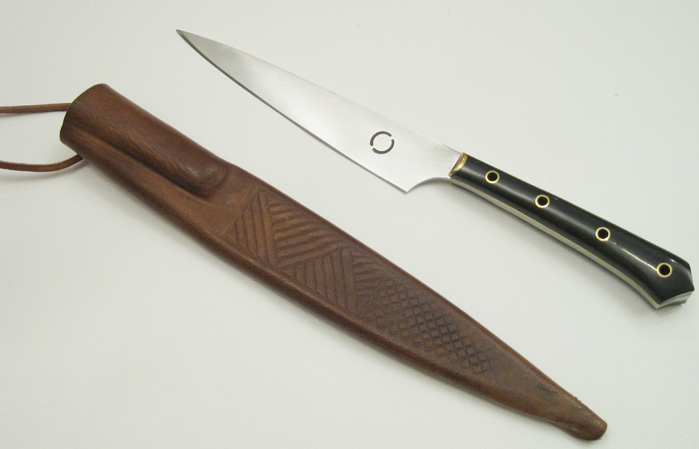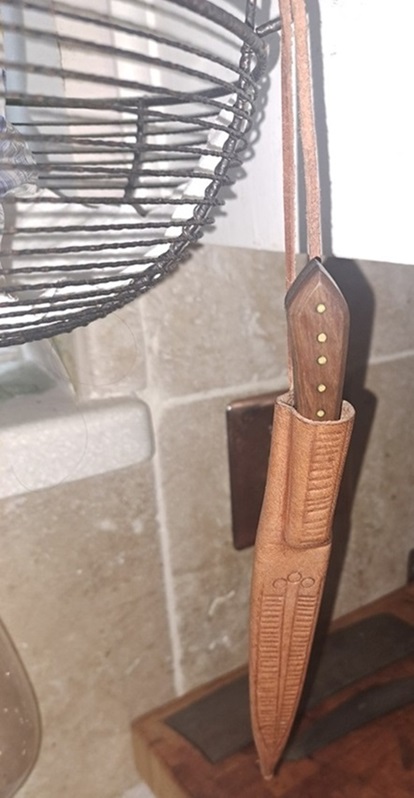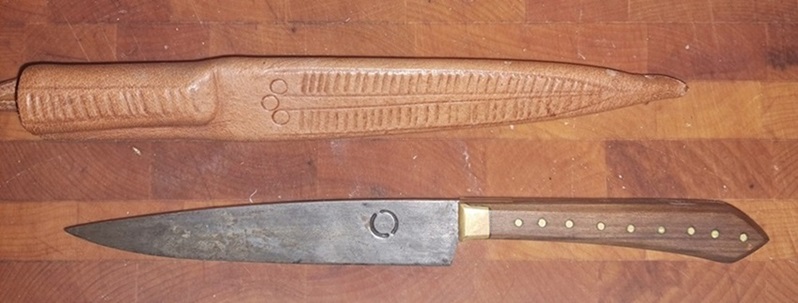Throughout human history, many people have regularly carried utility knives to help with everyday tasks like eating, cooking, cleaning game, cutting lines or laces, or a host of other things. Fixed-bladed knives of many eras can have tangs that pass completely through a grip or tangs to which scales have been affixed. Grips throughout history have often been mostly of organic material, with wood, bone, and horn being common. These materials, in addition to being plentiful, are durable, easy to shape, and attractive when finished.
The subjects of this review are two fixed-bladed knives that could both fit in the medieval era or early Renaissance. Their forms and construction, though, are not so dissimilar from modern knives. One, which will be referred to as “Knife 1” has a through (whittle) tang and multi-piece grip made of bone, horn, and brass. The other knife, “Knife 2,” has a scale tang where the horn and brass grips have been affixed with rivets.
Overview
Tod Cutler is a production product line sold by Leo “Tod” Todeschini in Oxford in the United Kingdom. Unlike Tod’s Workshop products that are built completely in Tod’s shop, Tod Cutler items are made elsewhere to Tod’s specifications. Tod Cutler pieces are designed fit a lower price point while providing quality products on (generally) an in-stock basis. Most of these pieces, like Knife 1, are of Tod’s design. A small handful, like Knife 2, are pieces that others retail as well, though I would trust the quality control of pieces Tod stamps with his mark more than the same pieces retailed by others.
Knife 1 (Bone and horn grip) Measurements and specifications:
Weight: 3.5 ounces
Overall length: 8 1/4 inches
Blade length: 4 1/2 inches
Blade width: 3/4 inches at base, tapering to 5/8 inches
Grip length: 3 1/2 inches
Knife 2 (Horn grip) Measurements and specifications:
Weight: 3 ounces
Overall length: 9 inches
Blade length: 5 3/8 inches, with a 5 inch cutting edge
Blade width: 7/8 inches at the base of the cutting edge, tapering to 1/2 inches
Grip length: 3 5/8 inches
Replicas created by Tod Cutler of Oxford, UK.
Handling Characteristics
One of the main criteria of an effective tool is to be safely and easily wieldable. These knives, though their grips are shaped quite differently, fit that criterion. The horn and bone grip of Knife 1 sits easily in the hand, with its octagonal cross section giving plenty of purchase. The polished organic materials are not slick and mate seamlessly with the brass elements for a comfortable grip. The blade is shorter than Knife 2, but is broader and thicker. It feels like a solid knife that would serve as easily at the table as in the field. Knife 2’s grip is no less comfortable or secure but feels quite different in the hand. The
shape of the blade as it meets the grip means that your index finger is often off the grip, resting against the unsharpened swell at the base of the blade. Your thumb sits naturally on the blade’s spine, giving plenty of leverage when needed. While it may look more delicate to some, it is robust enough to suit a variety of tasks. The grips of both knives are thicker at the end farthest from the point and taper distally to differing degrees.
Fit and Finish
Both knives are well-finished, especially given their prices. Both are sharp, with all the parts well-fitted and possessing no gaps or rough spots. The blades of both knives do exhibit a matte finish that shows fairly obvious vertical (Knife 1) or diagonal (Knife 2) striations that indicate the directions the blades must have traveled during their final polishing and/or sharpening. Each blade is marked with the Tod Cutler bifurcated circle. The horn parts of both grips are mostly a glossy black, with small and pleasing amounts of grays and white swirled in.
Knife 1 is, to me, is more characteristic of Tod’s design work and execution. A similar design was part of Tod Cutler’s predecessor English Cutler line. However, this knife is an improvement in every way over that one. The shapes are more refined and elegant and the level of fit and finish is higher. Of the two knives under discussion here, the two layered scabbard of Knife 1 is far nicer, with more detail and a nicely historical stepped flap through which the suspension thong passes. The decoration on the scabbard is simple, but well executed.
Knife 2 is a less expensive knife with less of Tod’s influence in its design and execution. The brass liners and hollow, tubular rivets contrast nicely with the dark horn grip. The scabbard is a single layer of thick, somewhat stiff leather. The design on it appears to be stamped, as the impression towards the tip appears faint or incompletely struck.
Conclusion
These knives are an interesting study in contrasts. First, they represent different price points. At the time of this writing, Knife 1 is not quite twice as expensive as Knife 2, but has a higher level of detail. The stainless steel blade of Knife 2 will appeal to some (and not others), but both are sharp and will serve well in a variety of tasks. The scabbards are quite different in terms of look, detail, execution, and construction, but fill their role well. While both are perfectly functional and attractive, the visual appeal and execution of Knife 1 is more at home alongside custom knives in my collection, while Knife 2 is more likely to sit in a desk drawer and be used for a variety of tasks around the house and garage. However, either will fit a variety of historical kits and modern home uses, while not straining most budgets unduly.
